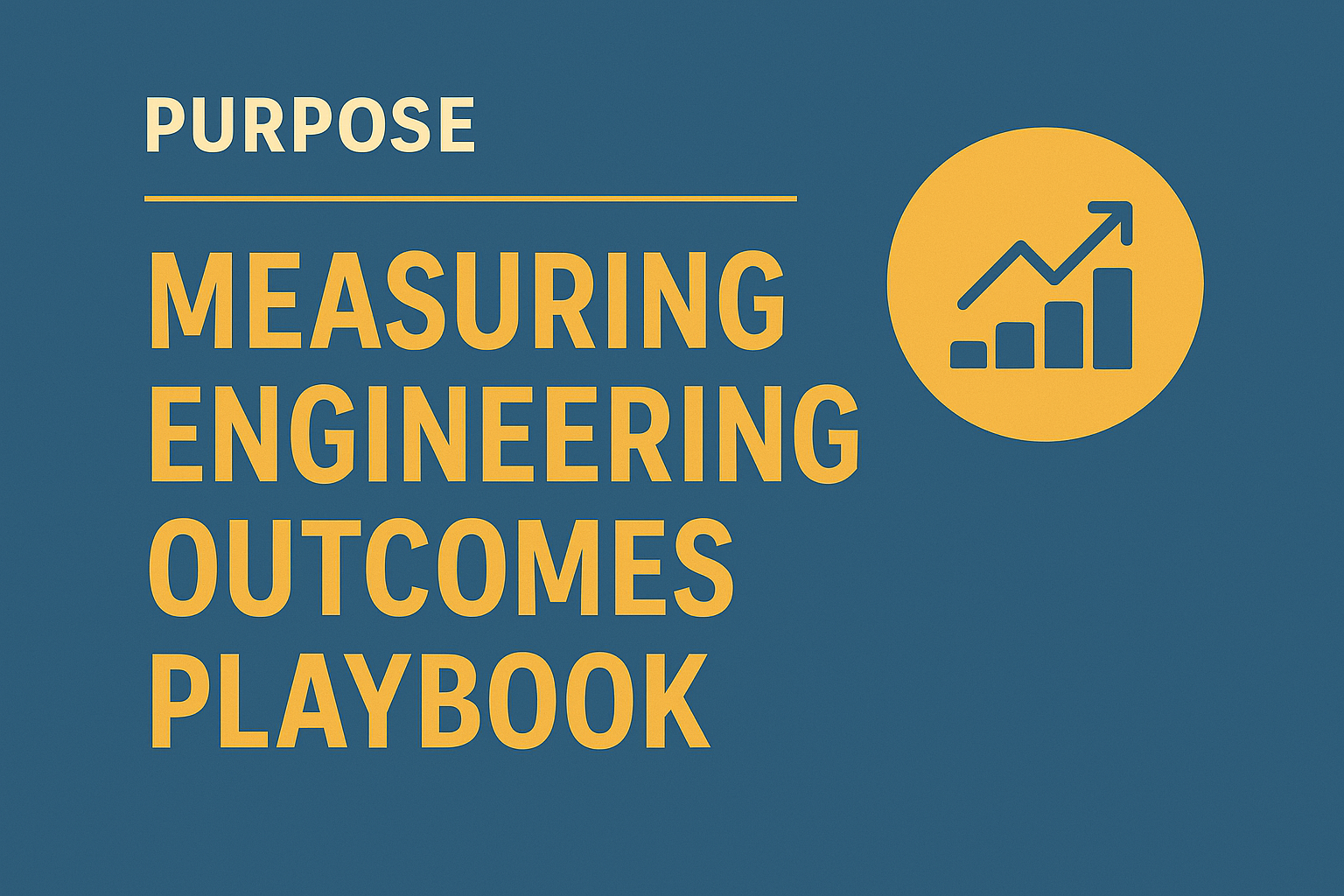Playbook : Measuring Engineering Outcomes Playbook

🌐 Purpose
To establish a clear, consistent, and outcome-driven approach to measuring engineering performance, effectiveness, and impact. This playbook enables leaders and teams to align engineering work to business value, identify opportunities for improvement, and celebrate success based on meaningful outcomes.
⚖️ Principles
- Focus on outcomes, not activity or vanity metrics
- Align measurement with customer and business value
- Support continuous improvement and transparency
- Embed measurement into the engineering workflow
- Measure the system, not just individuals
✅ Outcomes We Expect
- Better alignment between engineering investment and business impact
- Visibility into delivery health, flow, and quality
- Faster identification of delivery bottlenecks or risks
- Increased focus on what matters - value, safety, sustainability
📊 Key Outcome Categories
1. Flow & Delivery Performance (DORA Metrics)
- Deployment Frequency: How often you release value
- Lead Time for Changes: How quickly code goes from commit to production
- Change Failure Rate: % of deployments that cause incidents
- MTTR: How fast you recover from failures
2. Customer & Business Impact
- Adoption, engagement, or retention improvements post-feature
- Lead Time to Value (LTV): Time from idea to measurable outcome
- Feature effectiveness from experimentation (A/B testing)
3. Engineering Health & Quality
- Technical Debt trendlines (effort, issues, time spent)
- Test coverage, test pass rates, flaky test ratios
- Build & deploy success rates, rollback frequency
4. Developer Experience & Sustainability
- Cycle time per ticket
- WIP limits adhered to
- DevEx satisfaction survey results (e.g. SPACE framework)
- Burnout risk, team sentiment (from retros, pulse checks)
⚡ Practices to Embed Measurement
1. Define Success Early
- Establish clear metrics for features, experiments, or projects
- Include outcome expectations in planning and design
2. Automate Data Collection
- Use pipeline, repo, and tooling data where possible
- Reduce manual reporting and subjective tracking
3. Make Metrics Visible
- Create shared dashboards for teams and leadership
- Visualise trends, not just snapshots
4. Review Regularly
- Discuss delivery and outcome metrics in retros, OKR reviews, and post-mortems
- Use trend analysis, not one-off metrics, to guide improvement
5. Treat Metrics as Signals, Not Scores
- Use data to inform conversation, not judgement
- Avoid gamification or metric chasing
🔹 Dashboard Examples
- Delivery Health: DORA metrics, backlog throughput, PR lifetime
- Customer Outcomes: Adoption/engagement post-release, user satisfaction
- Technical Quality: Test flakiness, build failures, static code issues
- Team Health: DevEx survey scores, burnout indicators, WIP overages
🔄 Continuous Improvement
- Run quarterly reviews of engineering metrics across squads
- Identify recurring friction points and measure resolution impact
- Use metrics to support tech debt triage, capacity planning, and roadmap prioritisation
🔑 Governance Link
This playbook supports:
- Policy: Measure & Validate Value, Data-Driven Decision-Making
- Standards: Define & Track Engineering Metrics, Measure ROI, Integrate Value Measurement into CI/CD, Align Engineering Metrics with Business Outcomes
📖 Further Reading
- DORA State of DevOps Reports
- SPACE Framework by Microsoft Research
- “Accelerate” by Nicole Forsgren et al.
- Engineering Effectiveness @ Google
- Lead Time to Value (LTV) concept - productops community